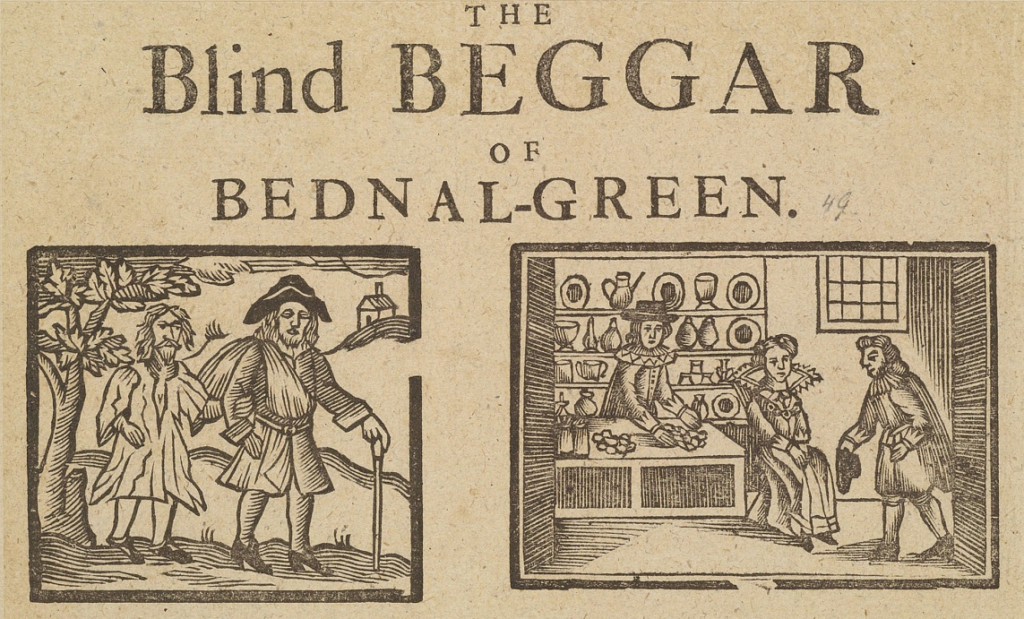
This broadside ballad is variously titled “The Blind Beggar of Bednal-Green,” “The Blind Beggar of Bethnal Green,” “The Rarest Ballad that ever was seen, Of the Blind Beggar’s Daughter of Bednal-Green,” and so forth. It appears in a number of iterations in the English Broadside Ballad Archive.
Webpage: Text transcription of EBBA 33233 (National Library of Scotland, Crawford.EB.709[1])
Audio: Musical Recording of EBBA 33233 (13:51)
Encountering the Text
Cheap print ballads are one of the best tools we have for getting clues about early modern culture, and this one has become somewhat canonical in cultural historical studies of disability. We were especially interested in the way that it talks about disability and women’s lives, and where we see disability being evaluated for community value.
- Do you have thoughts about the ways that disability is (or isn’t) intersectional here? How is disability about class, or race, or generationality, or nationality here?
- Consider the relationship between the ballad text and its woodcut(s), or the relationship between variants of the ballad.